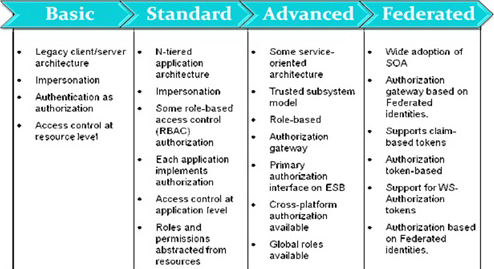You are designing an enterprise-level Windows Communication Foundation (WCF) application. User accounts will migrate from the existing system. The new system must be able to scale to accommodate the increasing load.
You need to ensure that the application can handle large-scale role changes.
What should you use for authorization? (Each correct answer presents a complete solution. Choose all that apply.)
A . Resource-based trusted subsystem model
B . Identity-based approach
C . Role-based approach
D . Resource-based impersonation/delegation model
Answer: B,C
Explanation:
Advanced Maturity: Authorization as a Service
In the advanced level of maturity for authorization, role storage and management is consolidated and authorization itself is a service available to any solution that is service-enabled.

* The Trusted Subsystems Model
Once authorization is available as an autonomous service, the need for impersonation is eliminated. Instead of assuming the identity of the user, the application uses its own credentials to access services and resources, but it captures the user’s identity and passes it as a parameter (or token) to be used for authorization when a request is made. This model is referred to as the trusted subsystem model, because the application acts as a trusted subsystem within the security domain.

Leave a Reply